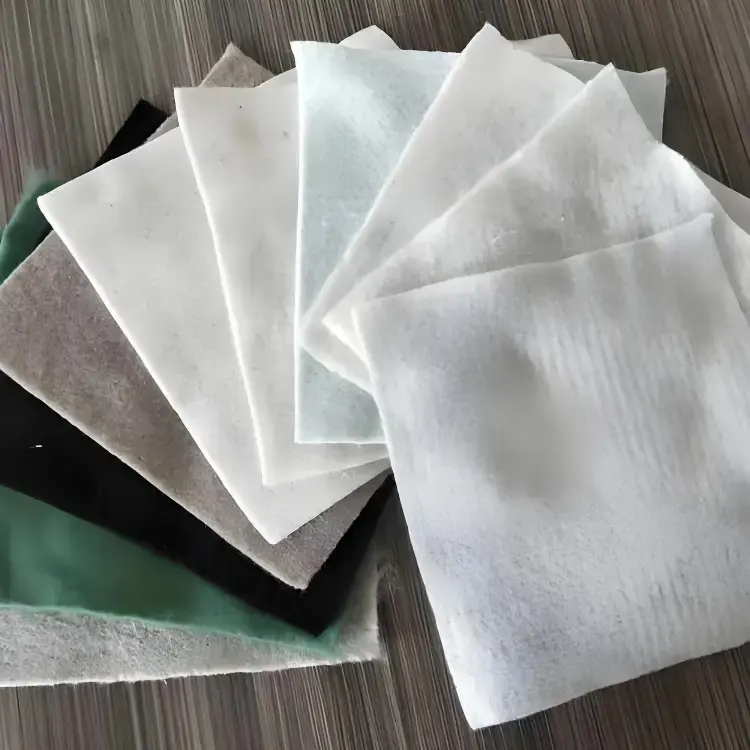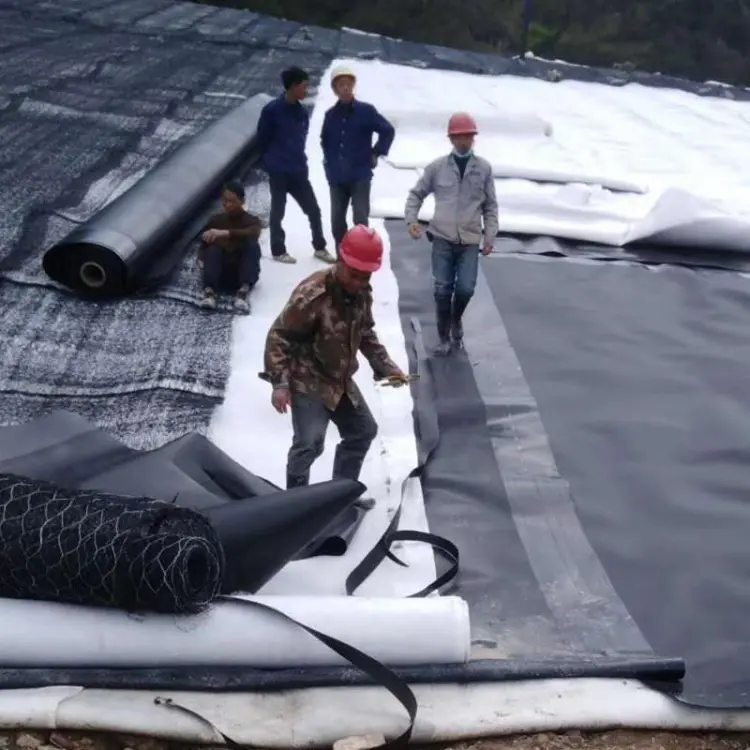Ⅰ. Raw Materials & Production Processes
PP Nonwoven Geotextile
- Raw Material: Primarily polypropylene (PP) granules
- Production: Meltblown or spunbond processes, where PP granules are heated/extruded into fiber webs, then consolidated via thermal calendering
PET Nonwoven Geotextile
- Raw Material: Polyethylene terephthalate (PET/polyester)
- Production: Spunbond or needle-punched methods
Ⅱ. Performance Comparison
| Metric | PP Nonwoven Geotextile | PET Nonwoven Geotextile |
|---|---|---|
| Tensile Strength | Lower (80gsm PP ≈ 65gsm PET strength) | Higher |
| Heat Resistance | ~200°C | ~290°C |
| Shrinkage Rate | Higher | Lower |
| Chemical Stability | Weak resistance to acids/alkalis | Superior corrosion resistance |
| Recyclability | Compatible with recycled waste PP | Uses virgin polyester chips (non-recyclable) |

Ⅲ. Application Scenarios
PP Nonwoven Geotextile
- Transportation: Subgrade separation/drainage in roads/railways
- Agriculture: Short-term crop protection/mulching
- Medical: Masks/surgical gowns
PET Nonwoven Geotextile
- Transportation: Reinforcement in highways/railways
- Water Conservancy: Dam/reservoir reinforcement
- Construction: Waterproofing layers (roofing/basements)
- Environmental: Landfill liners/wastewater treatment anti-seepage
Ⅳ. Cost & Market
- PP: Lower raw material cost + recyclability → budget-friendly
- PET: Higher-priced virgin materials → premium performance
Ⅴ. Conclusion
- PP: Cost-effective solution for agriculture/light infrastructure
- PET: High-strength choice for critical engineering (hydraulic/heavy-load projects)

